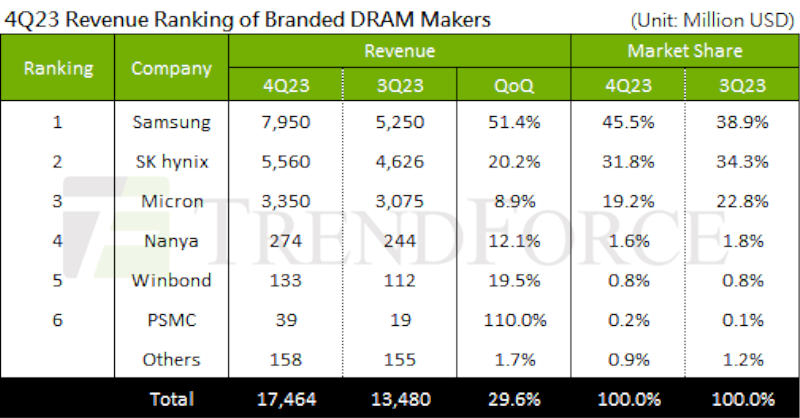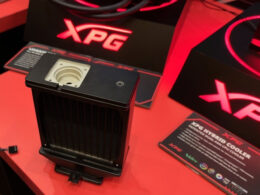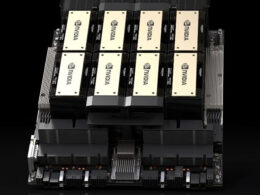The operating memory production industry, more specifically Dynamic Random-Access Memory (DRAM), has seen a 29.6% quarter-over-quarter revenue increase in Q4 2023, reaching a total of $17.46 billion, according to a report by TrendForce. This growth can be attributed to stockpiling efforts made by consumers and sharp production control by leading manufacturers. A price increase of 20% is expected in the current quarter, accompanied by a slight decrease in delivery volumes.
Company performance
Samsung retains the industry leadership, having increased its revenue by 50% quarter-over-quarter to $7.95 billion, largely due to DDR5 deliveries. Server DRAM shipments saw a boost of over 60%. SK Hynix managed to increase deliveries by 1-3% and, through its HBM, DDR5 and server DRAM segments, raised its Average Selling Price (ASP) by 17-19%. This resulted in a 20.2% increase in revenue to $5.56 billion. Micron, on the other hand, recorded a 4-6% rise in both volumes and prices, thereby boosting its revenue by 8.9% to $3.35 billion for the quarter, despite its relatively low DDR5 and HBM shares.

Production perspectives
Samsung has been ramping up production in Q1, reaching a 80% utilization level following a significant reduction in Q4 2023. A noticeable demand increase is anticipated in the second half of the year, which will consistently bolster manufacturing capacity throughout Q4 2024. SK Hynix is actively increasing its High Bandwidth Memory (HBM) capacity, targeting the mass production of HBM3e. Micron is ramping up semiconductor wafer production aiming to enhance its share of advanced 1-beta process products, such as HBM, DDR5, and LPDDR5(X).
Taiwanese manufacturers growth
Taiwan’s Nanya saw a volume and price increase, but due to a slow recovery in consumer sector sales, the company’s Q4 revenue only grew 12.1% to $274 million. Conversely, Winbond, having recently launched new capacities at its KH factory, aims to cut down stock and expand its customer base without raising contract prices. Their revenues thus grew by 19.5% to $133 million. As for Powerchip Semiconductor Manufacturing Corp (PSMC), they leveraged on the surge in spot and contract prices, thus increasing customer deliveries. This boosted their DRAM segment revenue by a striking 110% to $39 million, resulting in an overall company revenue increase of 11.6%.





